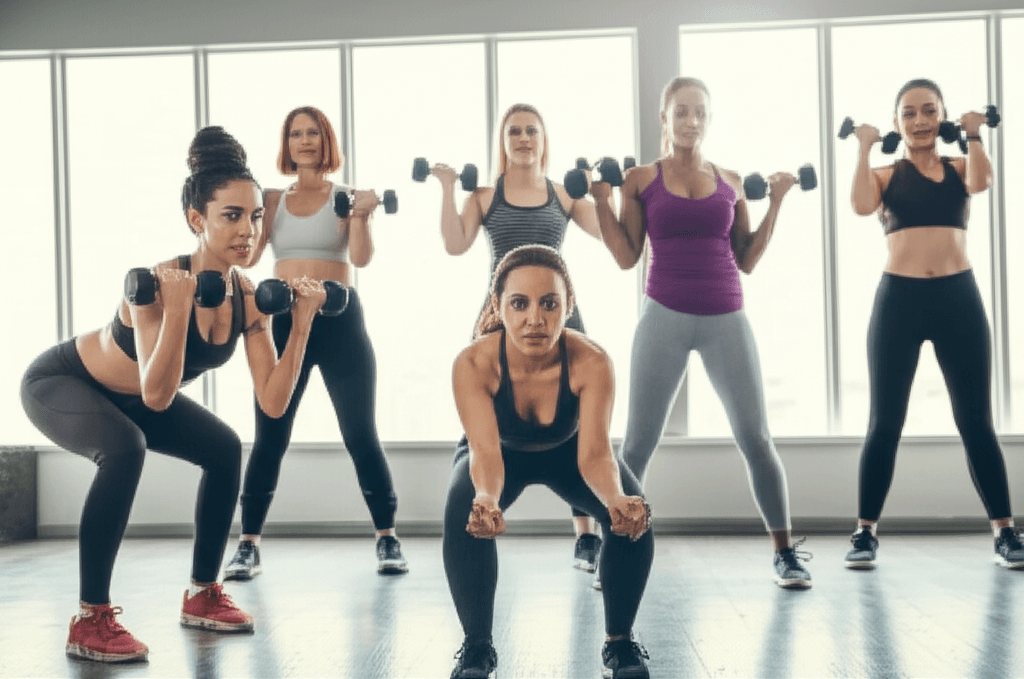Women pursuing fitness goals often face a unique set of challenges, many of which stem from pervasive and outdated myths surrounding exercise and nutrition. These misconceptions can hinder progress, promote unhealthy practices, and prevent women from realizing their full potential in the gym and beyond. It’s time to debunk these common fallacies and empower women with accurate, evidence-based information to achieve their fitness aspirations.

Myth 1: Lifting Weights Will Make You Bulky
One of the most persistent and damaging myths for women is the idea that strength training will lead to a “bulky” or “masculine” physique. This fear often drives women away from the weight room, despite the extensive benefits of resistance training.
Understanding Female Physiology and Muscle Growth
The primary reason this myth is unfounded lies in female physiology. Women naturally produce significantly lower levels of testosterone compared to men—about 10% of what a man’s body produces. Testosterone is a key hormone responsible for significant muscle mass development. Therefore, achieving a “bulky” appearance through weightlifting alone is extremely difficult for most women without the aid of supplements or specific, intense training regimens geared towards competitive bodybuilding.
Instead of bulk, strength training for women typically leads to increased muscle definition, a leaner appearance, and a higher metabolism. Muscles are more metabolically active than fat, meaning they burn more calories even at rest, which is beneficial for weight management.
Benefits Beyond Aesthetics
Beyond the aesthetic benefits of a toned physique, strength training offers a multitude of advantages for women’s health:
- Increased Bone Density: Weightlifting helps to increase and maintain bone density, crucial for preventing conditions like osteoporosis, especially in postmenopausal women.
- Improved Metabolism: Building lean muscle mass boosts your resting metabolic rate, leading to more efficient calorie burning throughout the day.
- Enhanced Strength and Functionality: Strength training improves overall functional strength, making everyday tasks easier and reducing the risk of injuries.
- Body Composition: It helps in reducing body fat and increasing lean muscle mass, leading to a more favorable body composition.
- Cardiovascular Health: Recent studies suggest that strength training can be as effective as cardio in promoting heart health and reducing risks of common age-related chronic diseases like diabetes and arthritis.

Myth 2: Cardio is the Only Way to Lose Weight
Another widespread belief is that endless hours of cardiovascular exercise are the sole or most effective path to weight loss. While cardio certainly plays a role in burning calories and improving heart health, relying solely on it can be an inefficient strategy for long-term fat loss and body transformation.
The Limitations of Cardio Alone
Cardio exercises like running, cycling, or swimming are excellent for expending calories during the workout and improving cardiovascular endurance. However, their impact on metabolism once the exercise stops is less significant compared to strength training.
Moreover, solely focusing on cardio can sometimes lead to muscle loss, particularly without adequate protein intake. Since muscle tissue is more metabolically active than fat, losing muscle can actually hinder long-term weight management by slowing down your resting metabolism. The body can also adapt to consistent cardio routines, leading to a “cardio plateau” where fewer calories are burned for the same effort over time.
The Power of a Combined Approach
For optimal fat loss and body composition, a well-rounded fitness plan that integrates both strength training and cardio is far more effective.
- Increased Metabolic Rate: Strength training builds muscle, which elevates your resting metabolic rate, meaning you continue to burn more calories even after your workout is over. Studies indicate that this “afterburn” effect can last for up to three days following a weights workout.
- Sustainable Fat Loss: Combining resistance training with cardio leads to greater fat loss than cardio alone.
- Body Reshaping: Strength training builds the muscle that gives your body shape and definition, complementing the fat loss achieved through cardio and diet.

Myth 3: To Lose Weight, You Just Need to “Eat Less, Move More”
The simplified adage “eat less, move more” is a pervasive weight loss myth that often frustrates individuals and overlooks the complexities of human physiology, hormones, and behavior. While creating a calorie deficit is fundamental for weight loss, this advice oversimplifies the process and can be ineffective in the long term.
The Complexity of Weight Loss
Weight loss is not merely a straightforward equation of calories in versus calories out. Numerous factors influence weight beyond just diet and exercise, including genetics, hormonal balance, stress levels, sleep quality, and the quality of food consumed.
- Metabolic Adaptation: The body is designed to maintain its current weight for survival. When calorie intake is significantly restricted, or exercise drastically increased, the body can adapt by slowing down metabolism, making further weight loss challenging and leading to plateaus.
- Quality of Calories: Not all calories are created equal. The nutritional quality of food significantly impacts satiety, energy levels, and hormonal responses. For instance, proteins and healthy fats can promote fullness and stable blood sugar, while refined carbohydrates can lead to energy crashes and insulin spikes, which can promote fat storage. Focusing on nutrient-dense, whole foods is more effective than simply cutting calories.
- Sustainability and Deprivation: Extreme calorie restriction can lead to feelings of deprivation, increased hunger, and a higher likelihood of overeating or developing unhealthy eating patterns in the long run. Sustainable weight loss is about lifestyle changes, not temporary diets.
A Holistic Approach to Nutrition and Activity
Instead of rigid restriction, a more effective and sustainable approach involves:
- Balanced Nutrition: Prioritizing a variety of nutrient-dense foods, including adequate protein, healthy fats, and complex carbohydrates.
- Mindful Eating: Paying attention to hunger and fullness cues and making conscious food choices.
- Sustainable Habits: Focusing on small, achievable changes to eating and exercise habits that can be maintained over time, rather than drastic, temporary measures.
- Addressing Other Factors: Recognizing the impact of sleep, stress, and hormonal health on weight management.
By dispelling these common myths and embracing a more informed and holistic understanding of fitness and nutrition, women can create effective, sustainable strategies to achieve their health and fitness goals.







